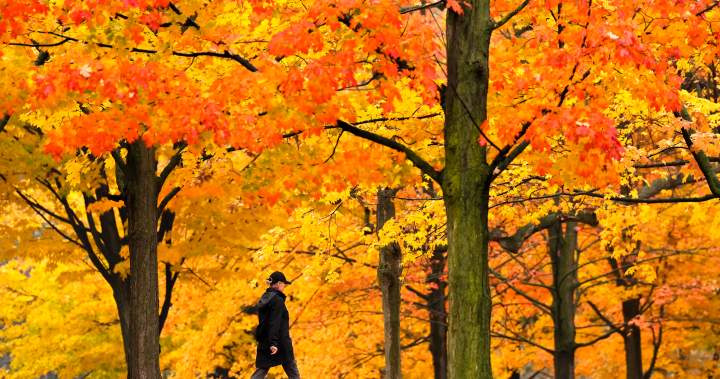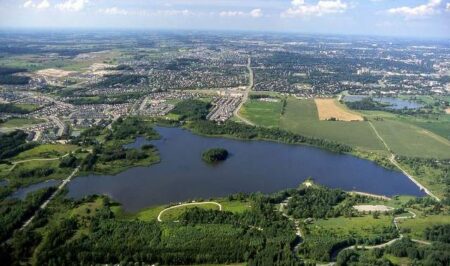Canadians hoping for a cool fall may be out of luck as meteorologists and climatologists say a warmer-than-normal autumn is upon us, but there’s also a good chance the dry conditions we’ve been experiencing are about to get much wetter.
After warm temperatures throughout much of the summer in many parts of Canada, Environment and Climate Change Canada climatologist David Phillips says don’t break out those winter jackets just yet.
“We see the fall as a lot of those days where the temperature is going to be, say, above normal,” he said. “Lots of sunshine, blue skies, almost the perfect kind of frame for the picture of the colour change season.”
Whether it’s Vancouver, Halifax, Toronto or even Yellowknife, forecasts show above normal temperatures well into October and parts of November.
Phillips notes, however, that this doesn’t mean 30 C, but temperatures higher than we would typically see.
“Average in September is typically four or five degrees colder than August,” he said. “Now you come to October, (it’s) typically six to eight degrees colder than September.”
Though it’s looking like the rest of September and October are going to be a few degrees warmer than usual, Global News chief meteorologist Anthony Farnell says November is going to be a bit of a “sharp” change.
He said the beginning of the month will start “OK,” but sudden Arctic air will head south, sending temperatures downwards.

Get breaking National news
For news impacting Canada and around the world, sign up for breaking news alerts delivered directly to you when they happen.
“I’d say warm first half and then cold second half, and that is, I mean that’s typical, but warmer than normal first half, colder than normal for the last month of fall,” he said.
Part of this change, Farnell says, is because the jet stream is pretty far north for this time of year, but it will begin to dive south in November, bringing that cold air with it.
He adds that the return of La Nina in the Pacific, which is often associated with cooler temperatures, is likely to bring in a slightly earlier winter.
Canadians may not need their jackets as much this fall, but umbrellas are likely to be out as more rainfall is expected. Farnell notes the precipitation will be needed as nine provinces and one territory are under extreme drought.
“I think we’re making up for lost time,” Farnell said. “We’re going to get some needed rainfall. It’s happening around the Great Lakes, it’s going to be on the East Coast as well.”
He also expects an active hurricane season during the fall after a relatively inactive one during the summer, which could lead to a “hit” in Atlantic Canada.
Phillips told Global News that even with the above-normal temperatures, Canadians should expect a brief shower of frost could still take place as is the norm for autumn, but if people are expecting a large amount of snow to hit in the middle of October, don’t.
“Overall, we’re going to have fall and we’re going to have winter, but the winter is not going to rush upon us, as long as we don’t count those one day of frost or a couple days of snow as winter arriving,” Phillips said. “I think we’ll get a little bit of that, but then it disappears and we get back into the kind of almost fall-like weather again.”
© 2025 Global News, a division of Corus Entertainment Inc.
Read the full article here














